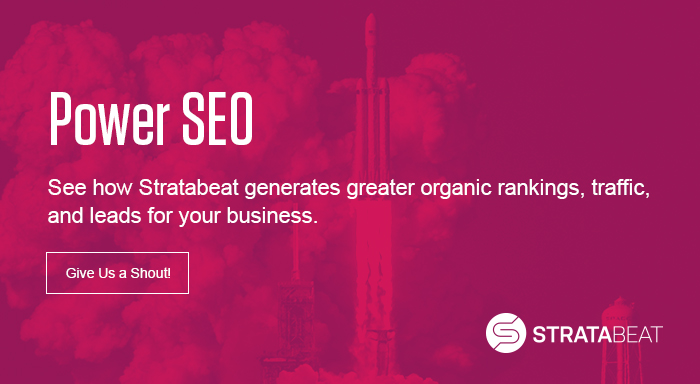How to Measure the ROI of SEO (Full Guide with KPIs)

In many ways, SEO (search engine optimization) is like the stock market. Similar to the stock market, SEO is a long-term investment. It takes time to achieve significant ROI. But when you do, the results compound over time.
If PPC advertising is like day trading, SEO is like a highly profitable mutual fund. It pays off in big ways, but it takes time to reach that point.
Read on to learn how you can produce significant SEO ROI (return on investment) to help your business grow significantly.
How to Prove the ROI of SEO
The importance of SEO is undeniable. To prove that SEO has a positive ROI, though, you need to be able to demonstrate that your SEO efforts have led to an increase in revenue, profit, or other benefits for your business. You need to prove that for every dollar invested, you generate more in returns.
Proving your SEO ROI can be done by looking at key metrics such as:
- Revenue
- Profit
- Leads
- Conversions
- Traffic
- Lower customer acquisition costs (CAC)
- Marketing cost savings
- Etc.
Comparing these metrics to the amount spent on SEO efforts can help you prove the ROI of SEO versus other digital marketing channels. You can demonstrate that SEO has moved the needle for the business and is worth the investment of more time and resources.
To calculate the ROI of SEO based on revenue, look at the following equation:
ROI = (Revenue from SEO – Cost of SEO) / Cost of SEO
This equation will help you determine how much revenue your SEO efforts have generated compared to the amount spent on them. You can do a similar calculation based on profit.
However, in order to prove the ROI of SEO more holistically, you should evaluate the impact that SEO has on your conversions and leads, as well as your CAC. If your business spends a great deal on paid search, display advertising, sponsorships, and other forms of paid marketing, you can also do specific calculations on the amount you save by focusing on SEO in comparison.
How SEO Produces ROI
SEO generates a positive ROI in a number of ways. Specifically, SEO helps you with the following:
Expanded Reach
Audience reach and brand awareness is the first step in the process of new customer acquisition. And one of the ways SEO produces ROI is by expanding your reach.
When you invest in SEO, you are able to reach more people with your content and messaging. According to BrightEdge, the share of traffic of organic search, at 53.3% on average across multiple industries, is higher than any other trackable form of marketing.
If your SEO is effective, it enables your business to rank on the first page of the search engine results pages (SERPs), which means more people are exposed to your content and web pages. By targeting the SEO keywords they are typing into Google and the questions they are asking online, you are able to reach prospects you wouldn’t be reaching otherwise. And, you’re reaching them at the precise time that they are most receptive to your message.
Greater reach = greater traffic.
Pushing Competitors Off the Page
SEO also produces ROI by helping you push your competitors off the front page of the Google search rankings. If you employ a “Dominate the Page” SEO strategy, where you aim to occupy multiple rankings on Google page one, you can knock one or more competitors off the page. This makes them invisible to all those searching in Google who never make it to the second page of search results.
Rank higher and push your competitors to Google page two, and you are more likely to get clicks and traffic to your website that are not going to your competitors. You’re gaining traffic while eliminating traffic to their sites. A double win!
This is especially true if you are able to rank in the top three positions on the SERP for key search terms. The top three positions on the SERP receive the majority of all clicks (sometimes as much as 50% or 70%), which means that if you can achieve a top-three ranking, you are significantly more likely to “steal” traffic, leads, and revenue from competitors.
Enhanced Brand Perception
Effective SEO also allows you to gain brand equity. If they keep seeing you appear in the SERPs, by default they consider you a legit player in the space and elevate the perception of your brand. It’s just human nature and how the human brain works.
As more and more people see your brand show up in relevant search queries, they begin to associate your brand with the topics they were searching as well.
This increased brand equity can lead to more traffic, conversions, leads, sales, and revenue. It can also help you charge more for your products or services since you are seen as a leader in your industry.
Coverage throughout the Funnel
Unlike many marketing strategies, SEO allows you to thoroughly cover every section of your marketing funnel.
PPC advertising is mostly useful in the middle and bottom of the funnel. It’s too expensive to provide you with coverage at the top of the funnel in many cases.
Rather than focusing on a single stage or otherwise limited percentage of the funnel, SEO allows you to address each step of the customer journey, from start to finish.
People who are in the Awareness stage of their buyer’s journey can find your brand’s educational content when they are searching for answers to problems they run into. Those who are in the Consideration stage can read and view content that goes into detail on your solutions and compares your products or services to those of your competitors. And those in the Decision stage can find ROI calculators, TCO calculators, competitor comparison matrices, case studies, pricing info, and sales support materials.
This thorough coverage throughout the buyer’s journey allows you to generate leads and sales at every stage of the funnel, which leads to a positive ROI on your SEO efforts.
Greater Conversions and Leads
SEO is one of the most effective forms of lead generation. According to HubSpot, 61% of B2B marketers find that SEO and organic traffic generate more leads than any other type of marketing.
So much of the buying process starts with a Google search. If you aren’t ranking high in search results, you are missing out on a huge opportunity to reach potential customers.
Because SEO is perfectly aligned with the thoughts of your audience, you’re engaging with them at the precise time they are most receptive and on the exact topics of heightened interest. This naturally gives you the opportunity to drive many types of conversions, such mailing list subscriptions, webinar registrants, whitepaper downloads, survey responses, etc.
The increase in conversions means that you can nurture these leads with effective segmentation, which naturally translates into higher sales qualified leaads (SQLs).
Lower Acquisition Costs
When your marketing is like a flywheel, it becomes easier and easier to generate new leads and sales. And that’s what happens when you consistently produce high-quality content that your audience values. If you build an SEO program with fresh optimized content on a regular basis, your topical authority increases and it becomes easier for your content to rank high in Google. With the increase in Google rankings, you get more traffic and leads. With more traffic and leads, more of your audience starts to share your content and link to it, leading to even greater traffic and leads.
Higher Revenue and Profit
According to BrightEdge, B2B companies generate twice the revenue from organic search than any other channel.
The more qualified traffic you bring to your website, the more qualified leads you’ll generate. The more qualified leads, the more sales.
Because SEO is drastically more cost effective than paid search and other forms of advertising, the increased revenue you generate through organic search typically translates into higher profit margins, as well. And as organic search results tend to compound over time, your revenue and profit gains accelerate from year to year.
Deeper Audience Insight
Beyond all the revenue-side benefits of SEO, there are also upstream benefits.
SEO is uniquely effective in providing you with insight into the thoughts and priorities of your target audience. Individuals are quite direct when they search in Google or are asking questions online. This is an invaluable opportunity for you to dig into the data to uncover how your audience thinks and what’s most valuable to them. You can then translate that insight into stronger content and messaging.
How to Generate 3X More Traffic from Your Google Rankings
Ready to Increase Your Organic Traffic? Read the Post
SEO ROI Statistics
Need proof that SEO has a very high ROI? Consider these statistics:
- 49% of marketers report that organic search has the best ROI of any marketing channel (Search Engine Journal)
- The ROI on Google organic search traffic is 5.3X, compared to 2X from paid search. (Google)
- 53.3% of all website traffic is driven by organic search. (BrightEdge)
- Organic traffic from search engines is approximately 1,000% greater than organic traffic via social media. (BrightEdge)
- 90% of B2B buyers research potential purchases using search engines. (Google)
How to Calculate the ROI of SEO?
Now let’s talk specifically about how to calculate the ROI of SEO. Follow these steps:
SEO Investment Cost
Calculating your SEO ROI starts with understanding how much you’re investing in your SEO efforts. This includes the cost of your website, hosting, freelancers, link building, SEO tools, content distribution, etc.
If you are hiring someone to help with your SEO, you’ll need to factor in the cost of their time, as well as any tools or software they use to do their job.
You also need to calculate the time spent on things like content creation, technical SEO, on-page optimizations, etc. Any task that is part of the SEO process needs to be included in the final cost.
Calculate the Value of Organic Conversions
The next step is to calculate the value of all organic conversions. This includes sales, leads, and any other desired actions that people take on your website.
To do this, you’ll need to have a clear picture of what each type of conversion is worth. You’ll need to know the value of a website visitor, lead, sale, etc. Arriving at these number requires a thorough knowledge of your sales process, as well as the Customer Lifetime Value (LTV). You need to know what percentage of organic traffic converts to leads, what percentage of leads converts to customers, and the lifetime value of each organic customer.
Account for the Value of Assisted Conversions
You also need to account for the value of SEO assisted conversions. An assisted conversion is a conversion that wouldn’t have happened without SEO, even if it wasn’t the last touchpoint.
To calculate this number, you’ll need to look at your attribution model. This will show you how much credit each marketing channel deserves for each conversion.
You can use Google Analytics (for example) to see how much credit SEO deserves for each conversion. Go to Conversions > Multi-Channel Funnels > Assisted Conversions. Then, set the Primary Dimension to Channel.
Once you’ve calculated the value of organic and assisted conversions, you can add them together to get the total value of SEO conversions.
Close Rate
To calculate SEO ROI you also need a clear picture of your close rate. In other words, you need to know how many leads your SEO efforts generate, and how many of those leads convert into sales.
You need a complete picture of your marketing funnel, from start to end. This will tell you how many people come to your website through organic search traffic, how many of those people become leads, and how many of those leads convert into customers.
Once you know your close rate, you can use it to calculate the total value of your SEO leads. To do this, simply multiply the total number of organic conversions by your close rate.
Customer Loyalty
Customer loyalty also needs to be factored into your SEO ROI calculations. According to a Forrester report commissioned by Terakeet, customers that originate from organic SEO traffic are more loyal than other types of customers.
While there are numerous reasons for this, the role that SEO plays in product research is certainly a prominent contributing factor. People that come to your website through organic search are typically further along in the buyer’s journey than people that come from other sources. They have also done a fair amount of research on your product and have concluded that you can help them solve their problems.
This means that they are more likely to be interested in what you have to offer, and more likely to make a purchase. They are also less likely to churn, which is the percentage of customers that stop doing business with you over a given period of time.
The Compounding Nature of SEO Results
What’s the lifespan of a social media post? Maybe a few hours? Maybe a day? With SEO, a high-performing web page can deliver traffic to your site for years.
Unlike many marketing channels, SEO is compounding in nature. In other words, the results grow over time. For example, in one year your organic traffic may increase by 100%, and then 50% the following year, and 50% yet again the year after that. The cumulative effect is powerful.
ROI must be calculated over a specific time period, and in order to truly calculate the ROI of SEO, it needs to be measured over different time frames. Only then can you know the true value that SEO and organic search bring to your company.
The compounding nature of SEO means that patience is required. It can take months to see the full effects of your SEO efforts. However, once you begin to gain momentum, the results can be significant.
Customer Lifetime Value
Finally, in order to calculate the ROI of SEO, you need to calculate your Customer Lifetime Value (LTV). LTV is the total value that a customer will bring to your business over the course of their relationship with you.
While there are a number of ways to calculate LTV, one of the most common involves Average Purchase Value, Average Frequency Rate, and Average Customer Life Span.
Average Purchase Value
Average Purchase Value is the average amount of money that a customer spends each time they buy from you.
To calculate Average Purchase Value, simply take your total revenue over a given period of time and divide it by the number of orders placed during that time.
Average Customer Life Span
Average Customer Life Span is the average length of time that a customer remains a customer.
To calculate Average Customer Life Span, take the length of your longest running customer relationship and divide it by the number of customers you have.
For example, if your longest running customer relationship is 5 years and you have 100 customers, your Average Customer Life Span would be 5 years.
7,235.7% More Organic Blog Traffic
Stratabeat Increased Organic Blog Traffic by 7,235.7% within 3 Years for a Client in a Hyper-Competitive Vertical. Eager for Similar Results? Let’s Talk!
SEO KPIs
To measure and manage your SEO efforts, you need to have key metrics in place. These metrics tell you how well your website is performing in the search engines, and how much organic traffic you are receiving.
Here are 7 key metrics to keep an eye on:
Search Rankings
Search rankings are the positions that your website occupies in the search engine results pages (SERPs) for various keywords. The higher you rank for relevant keywords, the more organic traffic you will receive.
You can track your search rankings with a number of different tools, including Google Search Console, SEMRush, Ahrefs, etc.
Organic Impressions
Organic impressions is the number of times your website appears in the search results, regardless of whether or not it is clicked on. Generally speaking, the greater the number of organic impressions the higher your organic traffic will be. However, it should be noted that if your site appears low in the search results the odds are significantly lower than it will be clicked on. This is why organic impressions must be tracked in conjunction with keyword rankings and organic clicks.
You can track your organic impressions and clicks with Google Search Console.
Google Organic Share of Voice (SOV)
Google Organic Share of Voice (SOV) is determined by two primary factors:
- The number of keywords on which you are ranking in Google, and
- The actual traffic volume from those searches
SOV gives you a more accurate picture of your rankings performance than just sheer number of ranking keywords. You can use tools like Accuranker to determine your share of voice and work toward owning a greater percentage of the search results.
Organic Traffic
The amount of organic traffic you’re receiving for relevant keywords is a direct and easy-to-understand SEO KPI. If you’re not getting organic traffic (regardless of your rankings), then it’s clear that you should change your approach to SEO.
SEO tools like Ahrefs can give you an estimate of how much traffic you should be receiving based on your keyword rankings but if you want the actual traffic data, look at your Google Analytics or other web analytics data. It will tell you exactly which pages are getting traffic, where it’s coming from, and much more.
Organic CTR from the Google SERP
Your organic Click Through Rate (CTR) from the Google SERPs is an essential KPI to measure. It tells you how often your listing is being clicked on when it appears in the search results. If a page is getting a lot of impressions but has a low CTR, something needs to change in the way it appears on the SERPs. This might mean changing the Title tag to make it more clickable or writing a more compelling meta description.
You can monitor your CTR for different pages through Google Search Console.
Conversions
A conversion can take many forms. Some conversions are part of the lead generation process. For example, newsletter signups, webinar registrations, and whitepaper downloads. These are all incremental steps in the process. It might not mean that they are a qualified lead, but it’s a step in that direction.
Other types of conversions can be directly tied to a new lead. For example, the submission of a website form asked to talk with sales.
All of these conversions are valuable and aspects of SEO ROI.
Pages per Organic Session
The pages per organic session is the average number of pages that a user views when they visit your site from an organic search. This is important to track because it gives you an idea of how engaged users are when they land on your website. If users are visiting a high number of organic pages when they visit your site, it’s an indication that they are finding your content useful.
If your organic page number is low, on the other hand, it suggests that your content isn’t especially compelling or that you should try different CTAs to drive greater engagement.
You can track the pages per organic session through your web analytics package.
The Challenges of Calculating SEO ROI
There are certain challenges that come with trying to calculate the ROI of SEO. Five specific ones include:
Attribution is Often Skewed
It can be difficult to attribute conversions to specific channels like SEO because users often interact with multiple channels before converting. Today’s customer journey is often more of a zig-zag than a straight line.
This is why it’s important to track as many data points as possible so that you can have a clear picture of how users are interacting with your website. Google Analytics can help you do this by tracking things like the source of the traffic, the number of pages viewed, and how long users stay on your site.
Brand-Building and SEO
SEO plays a key role in building brand equity. All things equal, higher brand equity translates into more conversions and revenue. However, it can be difficult to attribute this increased brand equity directly to SEO because it’s hard to measure.
One way to measure the impact of SEO on brand equity is to track the number of searches for your brand over time. If you see an increase in searches for your brand, it’s likely that your SEO efforts are having a positive impact on your brand equity.
Time Discrepancies Between “Investment” and “Return” Periods
SEO is long-term in nature. There is always some period of time before you start to see SEO efforts produce a return. This can make it difficult to track and attribute the ROI of SEO in the short-term.
To get around this, you need to set realistic expectations for what SEO can achieve in the short and long term. In the short term, SEO can help improve brand awareness and traffic. In the long term, it can help increase leads, sales, and revenue.
Limited Capabilities of SEO Testing
The long-term nature of SEO also makes testing challenging. Unlike PPC ads, where you can quickly test variations of an ad set, it takes time to see the results of changes made to an SEO campaign.
This is why it’s important to focus on key metrics that will give you an indication of whether your SEO efforts are successful. These metrics can include things like organic traffic, conversion rate, and pages per session.
NOTE: This post was originally published on March 22, 2015, and was updated on September 6, 2022.



